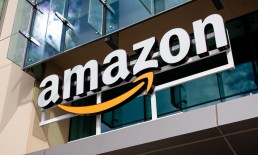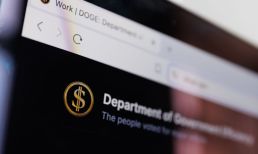With the entry of dozens of digitally native companies into the online grocery space, and with billions in venture capital to power their expansion, traditional brick-and-mortar grocers are challenged to adapt to retain the loyalty of their shoppers. Strategies that worked when online orders made up an almost negligible fraction of their business are proving not to hack it in today’s market, as consumers who turned to online ordering options during quarantine continue to seek out the convenience of the channel.
“COVID [has] caused a lot of grocers to examine and reexamine [their] strategies,” Colman Roche, vice president of eCommerce and retail at logistics solutions provider Swisslog, told PYMNTS in a recent interview. “They’ve been going through the process of trying to get pickers into stores and react, but they run very quickly into congestion problems within stores, which scares regular customers.”
Read more: Fixing the ‘Broken Economics’ of Grocery Delivery
Roche noted that digital orders make up 8-15 percent of local grocers’ business, requiring solutions that accommodate this shift. For its part, Swisslog creates micro-fulfillment centers (MFCs) — small, automated warehouses that fulfill online orders so that grocers can expand their digital fulfillment capacity without crowding stores with pickers for delivery orders, disrupting the shopping experience for brick-and-mortar customers. The company works with major grocery players including Peapod Digital Labs, the eCommerce arm of Ahold Delhaize USA and H-E-B, a supermarket chain that operates more than 340 stores in Texas and Mexico.
You might also like: Grocers Bolster Delivery Efforts With Small Warehouses
Picking Up Steam
Advertisement: Scroll to Continue
Roche noted that before the pandemic, the U.S. lagged behind comparable markets when it came to online grocery, highlighting the United Kingdom and France as countries that were far ahead. However, in the last year and a half, the country has caught up and even pulled ahead. He explained that the country is “now on the cutting edge of online grocery shopping.”
In fact, PYMNTS’ November 2020 Omnichannel grocery report, created in collaboration with ACI Worldwide, found that, by that point, 64 percent of U.S. consumers were using digital channels for making grocery purchases. Additionally, our study on the Bring-It-To-Me Economy, a collaboration with Carat by Fiserv, found that 28 percent of U.S. grocery shoppers were ordering groceries online for curbside pickup more so than before the pandemic and that 27 percent were ordering groceries online more for delivery.
See also: The Omnichannel Grocery Report: Leveraging Digital Purchasing Channels to Boost Conversion
Read more: The Bring-It-to-Me Economy: How Online Marketplaces and Aggregators Drive Omnichannel Commerce
Part of this rise, Roche said, comes from automated solutions’ successful fulfillment of eCommerce orders, leading to a growing trust among U.S. consumers in the technology.
“A lot of consumers overcame concerns about, let’s say, bruised produce and things like that, during COVID,” said Roche. “With [our technology], we can safely and predictably handle fruit and produce and eggs and all sorts of things in automation, because the automation is actually quite gentle.”
Big and Small
Roche noted that the digital shift has been harder on small grocers and regional chains, noting that the major brands usually have “more sophisticated supply chains” that have developed over decades of dealing with their massive inventories.
Conversely, smaller players have tended to rely on third-party solutions, so it has been harder for them to take advantage of emerging eCommerce solutions such as MFCs. He added that in addition to “the actual changes in processes that are involved” in implementing micro-fulfillment solutions, the reliance on third-party services also poses challenges because of the “contractual changes” inherent to the process.
In the years ahead, Roche predicts that the gap between solutions that make sense for the largest chains and those that work for smaller businesses will only continue to widen. “It’s not a mature enough space for one strategy to pop out as being the one,” he said. “So, I think you’ll see different strategies pursued by national and regional grocers. It’s continuing to be a highly changeable environment.”
Make It Stick
In this immature space, many have rushed toward solutions that seem like they will help in the short term, but will likely not endure in years to come. Roche noted that in this period of change, grocers face the difficult task of simultaneously trying to meet the growing demand for eCommerce and looking to “figure out new strategies” for their online future, goals that can sometimes butt heads.
When it comes to technology solutions, this can take the form of opting for newcomers with savvy marketing above those with a strong track record.
“There is an attractiveness to new companies with new and sexy technologies,” Roche said. “[But] from an operations viewpoint, once the technology is deployed, it almost needs to become boring, which is the opposite. You need that reliability.”
A similar short-term mindset has also hurt grocers when it comes to deciding who fulfills orders. Roche noted that many grocers “have been losing money by switching quickly to the Instacarts and so forth of this world” — a solution that can be helpful in fulfilling the orders that come in today, but which over time causes grocers to lose both a significant portion of each sale and their ability to have a direct relationship with their shoppers.
Though online grocery has taken a dip in recent months, Roche noted that the “prevailing view” is that sales will soon begin to grow again, continuing to do so in the years ahead. Still, while there is a tremendous amount of room to grow, grocers need to navigate this enormously difficult period to achieve that growth.
“It’s a highly dynamic environment right now,” he reflected. “Grocers, in fairness, are juggling a lot of things as they try to move forward, and that’s really challenging.”




